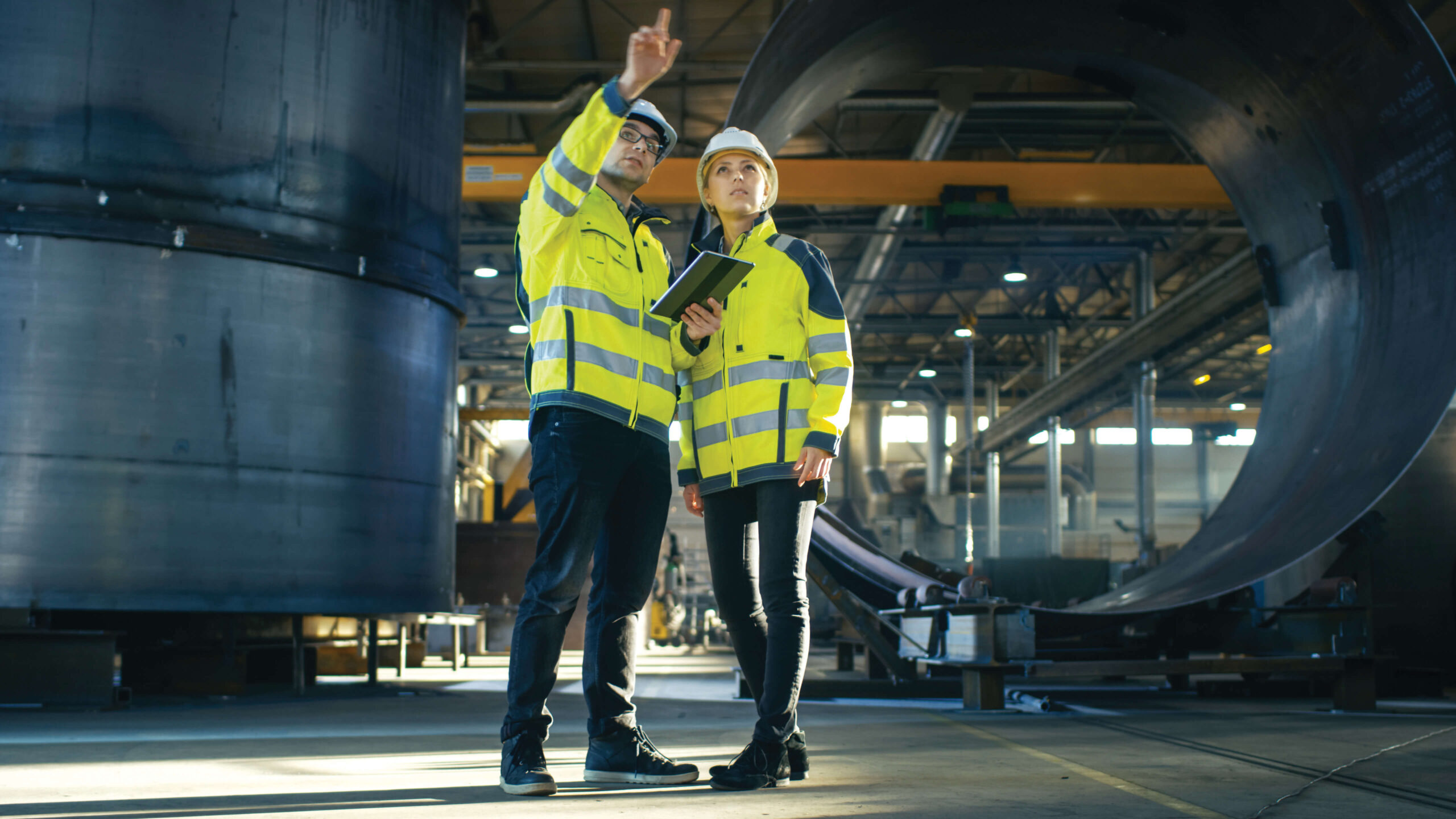Search
Your Process Safety Questions Answered

We regularly receive written questions from industry on process safety matters. WE ENCOURAGE THIS. Sometimes the questions come through our website and other times they follow our consulting colleagues’ web presentations or public speaking engagements. We’d like to share some of these questions and our responses with you. The questions in this edition of Process Safety Dispatch were received following a webinar, “Dust Explosion Testing – How to Get the Right Data Without Breaking the Bank”, by Dr. Vahid Ebadat, CEO of Stonehouse, for Powder & Bulk Engineering, https://www.powderbulk.com/webinars/dust-explosion-testing-how-to-get-all-the-right-data-without-breaking-the-bank/.
Here are the questions, together with our considered answers:
Questions 1: What is the chargeability test vs. volume resistance?
Questions 2: How do you handle product testing for a facility when there are over 150 different raw material products that are used? They can’t expect us to test them all!
Question 3: Since ASTM explosivity testing is done in a closed system or bomb on a static cloud of dust, do these results apply for a non-static concentration of dust that is in high velocity motion in air, such as in a pneumatic conveying system?
All answers available below.
___________________________________
Question 1: What is the chargeability test vs. volume resistance?
Answer 1: We would contend that there are 4 critical material properties that contribute to evaluation of electrostatic hazards in a powder handling processes. Three of them are independent of each other. These properties are:
- powder Minimum Ignition Energy (MIE)
- powder Volume (or bulk) Resistivity (related to charge relaxation time)
- powder Chargeability
The dust cloud Minimum Ignition Energy (MIE) tells us how easily (or indeed, if at all) the dust can be ignited by electrostatic sparks. It is a measure of the lowest (capacitive) spark energy capable of igniting an optimal dust cloud concentration.
The powder Volume Resistivity tells us if charge that builds up on a powder in a grounded, conductive container will lose much charge by conduction. It is related to charge relaxation time (or charge decay time) which is a direct measure of rate of charge loss.
Powder Chargeability will indicate if the powder will charge, and to what level, when moving against various plant surfaces (plastics, stainless steel …., pneumatic conveying, mixing, sieving …)
It’s important to note that the chargeability of a powder is completely independent of the Volume Resistivity/Charge Relaxation Rate. A very conductive powder may become highly charged (high chargeability) and a highly insulating powder may or may not charge much, for example.
For more information on the measurement of Minimum Ignition Energy, Volume Resistivity, Charge Relaxation Time, and Chargeability on your products and how the results of these tests can be used on your plant, please contacts us.
___________________________________
Questions 2: How do you handle product testing for a facility when there are over 150 different raw material products that are used? They can’t expect us to test them all!
Answer 2: As one of the US’s major dust explosion contract test laboratories, this is a question that we hear regularly and sometimes the sentiment expressed here can inhibit actioning a dust testing program. “What can of worms are we opening here?”
There is good news. In all likelihood, there will only be a need for limited testing; but ‘what to test?’ and ‘which tests to perform?’
Most times when we get this question, we explore the status of any Dust Hazards Analysis (DHA) on our client’s facility – according to the NFPA 652 standard on combustible dusts. This has to be completed by September 2020 this year anyway, so it makes sense as a logical first step. This approach would allow for the evaluation of each hazard situation and selection, not only of representative sample(s), but also the applicable test(s). It should be noted that which test(s) to perform depends – amongst other factors – on the likely ignition sources that are identified during the DHA as well as the prevention and/or protection measures that will need to be taken to ensure safety of people and the facility.
In our view, the Dust Hazard Analysis should include the entire list of the client’s materials:
- to see if various materials could be grouped together so that a small number from each group would need to be tested,
- to study the materials’ SDS’s for information on explosibility/combustibility that might help us exclude some materials from testing,
- to determine average quantity of each material used – we could perhaps initially focus on materials that are used in larger quantities and higher frequencies,
- to determine if the testing of some samples from the dust collectors and any central dust removal system alone would be sufficient in obtaining the necessary data for the DHA – instead of testing all possible powders.
Sometimes, to narrow the list of samples for testing, one could perform ‘screening’ tests which would obviously be quicker and cheaper to perform and would then allow us to perform ‘full’ tests on a smaller number of materials.
Example: You have a dust collector serving multiple points and collecting different powders and you want to check that the explosion relief vent area is large enough. To check this, we will be looking for the maximum credible explosion severity (Kst) value powder (mix) that can occur in the dust collector. We’d begin by looking at your list of powders. Are they all explosible? Do we have data on the same materials? Any information in the SDS?
This review may identify a few ‘red flag’ materials. Next, we’d review powder usage data. Are any powders used in such small quantities that it is not credible that they could significantly contribute to the overall worst case Kst in the dust collector. Are powders used in sequence or will there always be mixtures in the collector?
Eventually we come down to a short list of most commonly used powders with the highest Kst values. Depending on our initial findings, we would then advocate testing a few worst-case powders – or even sampling at certain times from the dust collector when worst case conditions are likely to be prevalent.
This all may seem a bit daunting, but don’t worry we can do this for you – and rest assured it will produce lowest cost/most cost-effective solution to your testing program. For more information on our dust explosion testing services, please contacts us.
___________________________________
Question 3: Since ASTM explosivity testing is done in a closed system or bomb on a static cloud of dust, do these results apply for a non-static concentration of dust that is in high velocity motion in air, such as in a pneumatic conveying system?
Answer 3: A good question, but best begin by understanding the actual lab test conditions and comparing them to plant conditions.
The same test equipment design – used to measure maximum dust explosion pressure (Pmax) and Kst value – is the 20-liter sphere (see Stonehouse Explainer article on Kst here). It is essentially a pressure vessel in which we create a dust cloud, ignite it, and measure pressure rise over time. The dust cloud is created by first evacuating the pressure vessel, then opening a full port valve to introduce the dust sample. A timer sequence then activates a pair of chemical ignitors (detonators) according to a set delay time. At time of ignition, the dust cloud has a degree of turbulence. Actually, most dust clouds will be somewhat turbulent – otherwise there would not be a dust cloud!
When the original research on dust explosion test methods was done in Switzerland and Germany, the delay time and turbulence level in the 20 litre sphere were a focus of attention because turbulence does increase explosion rates of pressure rise – and Kst value – and the maximum explosion pressure, Pmax. In practice, the actual test turbulence level is a little arbitrary – but levels were deemed at the time to be reasonably representative of process plant conditions (e.g. turbulence in a silo during pneumatic filling or perhaps in a reverse jet bag house). Tests of explosions in 1m3 vessels and eventually in full sized process plant showed this to be reasonable. Of course, the observant of you will appreciate that in truth, although turbulence level is a little bit arbitrary in the test in as much as it is the same for ALL POWDERS tested in the test equipment – and therefor Kst value is a very useful comparator to use, showing which powders are more strongly explosible than others. There has been academic work that has been critical of this (for example, ref. 1) but we would observe that investigations of real industrial incidents – explosions – have not yet, at any rate, shown the standard explosion relief design methods to be unsound.
For completeness, it is probably worth pointing out that at high levels of turbulence, the tried and tested formulae used for explosion vent design may not always work. Indeed, in pressure piling situations (e.g. explosions in long pipes), even relatively weak dust deflagrations can transition to detonations – with much more devasting potential than the simple explosion protection design can accommodate.
We are always happy to talk through any specific plant conditions in advising on test data and its applicability to plant. For more information, please contact us.
Ref: Dahoe. On the Decay of Turbulence in the 20-Liter Explosion Sphere. Flow, Turbulence and Combustion 67: 159–184, 2001

Get in touch
To learn more about our expertise and services in dust explosion prevention & mitigation, call us at +1 609 455 0001 or email us at [email protected] today.
We also offer tailored virtual and in-company process safety training programs on Dust Explosions, Static Electricity and HAC (Hazardous Area Classification) and more. Find further information here.










